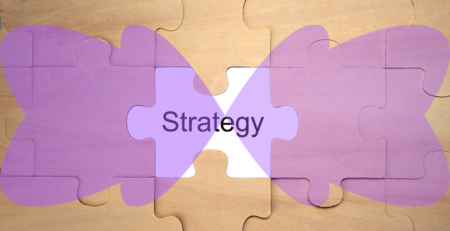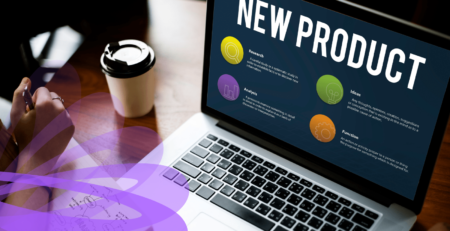5 Secrets to Unlocking Your Brand’s True Potential: A Comprehensive Guide
5 Secrets to Unlocking Your Brand's True Potential
A strategic guide to building a purpose-driven, customer-centric brand ecosystem for sustainable growth.
1. Purpose: The Bedrock "Why"
Your purpose is your "North Star"—the reason you exist beyond profit. It guides every decision and inspires both employees and consumers, forming the foundation of your brand.
175%
Purpose-driven brands can increase their brand value by as much as 175% over 12 years.
2. Identity: The Architecture of Trust
Translate your abstract purpose into a tangible, recognizable face and voice. Consistency across all touchpoints is the key to building familiarity and trust.
+10%
Brands that maintain a high level of consistency are likely to see revenue growth of 10% or more.
3. Customer Centricity: The Engine of Loyalty
Build your brand *with* your customers, not just for them. Move beyond demographics to deeply understand their motivations and pain points to build true advocacy.
88%
An overwhelming 88% of consumers trust online reviews as much as a personal recommendation from a friend.
4. Differentiation: Own Your Space
Carve out a unique and defensible position in your customers' minds. Reframe the competitive landscape by creating and owning a narrative that makes you the only logical choice.
#1
Become the only choice for customers who buy into your specific narrative, rendering competitors irrelevant.
5. Measurement: The Compass for Growth
Branding is a continuous process. Use a balanced scorecard of metrics to track performance, understand brand equity, and adapt to future trends like AI and personalization.
O-Data + X-Data
Combine operational data (O-data) with experiential data (X-data) for a truly holistic and actionable view of your brand's health.
This infographic is based on the strategic framework from the “5 Secrets to Unlocking Your Brand’s True Potential” guide. Infographic by Trace Brand Building.
5 Secrets to Unlocking Your Brand’s True Potential
Picture this: You’re scrolling through campaign metrics that refuse to budge. Your brand should be a landmark in its category, yet competitors capture market share while you’re churning through ad spend. Sound familiar? You’re not alone. Marketing leaders arrive at our door carrying the weight of unmet KPIs and brands that fail to ignite the discussions they deserve.
Here’s the thing: Your brand possesses untapped potential. The difference between brands that command categories and those that chase them isn’t budget or luck. It’s understanding and implementing five core secrets that transform empty recognition into brand salience that drives qualified leads to the next step.
We’ve witnessed this transformation repeatedly through our MAGIC Audit process, watching brands achieve a median 34% sales lift. Let’s unpack what separates market leaders from the rest.
Secret 1: Purpose – Your Brand’s North Star
The Bedrock of Purpose: Defining Your “Why”
Brand purpose is the foundational reason your brand exists beyond generating profit. It articulates the positive impact you aim to have on customers, community, and the world. According to Don’t Panic London, this higher-order reason provides essential meaning that inspires both employees and consumers, forming the bedrock upon which all brand-building activities are constructed.
Research from Adobe reveals that consumers are four to six times more likely to support purpose-driven companies. Plastic Bank’s research shows purpose-driven brands increase their brand value by 175% over 12 years, significantly outpacing the 70% growth rate of brands lacking clear purpose. Forbes reports that a portfolio of the 50 highest-performing purpose-driven businesses was 400% more profitable than an S&P 500 investment.
Framework for Defining an Authentic Purpose
At Trace Brand Building, we recognize that defining purpose requires deep introspection. This is prevention over cure – getting it right from the start rather than retrofitting later. FreshSparks outlines the Start with Why methodology that compels leaders to look beyond what a company does to uncover the core belief that drives the organization.
The litmus test would be distinguishing purpose from related strategic concepts:
- Purpose: Your overarching “Why” – the brand’s fundamental reason for being
- Vision: Your “Where” – the long-term, aspirational future you aim to create
- Mission: Your “How” – the specific actions to achieve your vision
- Values: Your “Behaviors” – the guiding principles that govern actions
The most significant risk? Purpose-washing – adopting a cause for PR value without integrating it into core business strategy. Modern consumers spot inauthenticity quickly. Purpose not backed by tangible action severely damages trust and creates brand debt that’s difficult to overcome.
Case Studies in Purpose-Driven Success
Patagonia built their entire operation around “We’re in business to save our home planet.” This manifests through sustainable materials, donating 1% of sales to environmental causes, and bold conservation activism. Their unwavering commitment cultivated a fiercely loyal customer base who see purchases as activism, allowing them to command premium pricing.
Dove underwent a dramatic strategic pivot in 2004, adopting a new purpose: redefining beauty standards and advocating for women’s self-esteem. Their “Real Beauty” campaigns resonated globally. The commercial result was staggering – sales jumped from $2.5 billion to $4 billion after the shift, proving that pro-social purpose can be a formidable driver of business growth.
Tesla’s stated purpose is to “accelerate the world’s transition to sustainable energy.” This positions the company not as a mere automaker but as a leader in technological innovation, giving the brand permission to expand into adjacent categories that would be less natural for traditional car companies.
Application to Your Brand’s Website: The Digital Manifestation of “Why”
Your website serves as the primary platform for communicating purpose. Through our brand positioning services, we help brands drive visitors to the next step by:
- Transforming the ‘About Us’ page into a purpose manifesto that articulates your “why” – moving beyond corporate timelines to compelling narratives that inspire
- Crafting homepage hero sections that immediately communicate purpose and unique value proposition – answering “What’s in it for me?” in context of your larger mission
- Developing visual storytelling that reflects your brand’s purpose rather than relying on sterile product shots
- Creating content strategies that prove you “walk the talk” through tangible proof of purpose in action
Secret 2: Identity – Engineering Recognition and Trust
The Architecture of Identity
While purpose provides your brand’s soul, identity provides its recognizable face and voice. A strong, cohesive brand identity is key to cutting through market noise, building familiarity, and establishing foundational trust for lasting customer relationships. This is about creating brand salience – being top-of-mind when customers have jobs to be done in your category.
Core Components of Brand Identity:
Verbal Identity: Your consistent brand personality (expert, playful, empathetic, irreverent) and tone adapted for different situations. This encompasses messaging frameworks, taglines, and specific vocabulary used across communications – the language that drives a hammer through customer pain points then puts a band-aid on it.
Visual Identity: Logo, color palette, typography system, and imagery style. These elements must be strategically selected to evoke desired emotions and accurately reflect your brand’s personality and purpose – designed to stop the scroll and capture attention.
Brand Pillars Framework:
- Purpose: Why you exist
- Positioning: The unique space you occupy in the customer’s mind
- Personality: Your human characteristics
- Perception: How customers experience and feel about the brand
- Promotion: How you communicate and engage with your audience
The Unbreakable Rule of Consistency
Consistency is non-negotiable. Your message and appearance must be uniform across every touchpoint. Inconsistent branding creates cognitive dissonance, confuses consumers, and damages credibility. Frontify’s research shows brands maintaining high consistency levels see revenue growth of 10% or more compared to those that don’t, establishing a clear link between disciplined brand management and financial performance.
Through our corporate identity development, we create comprehensive brand guidelines – your “brand bible” that meticulously details correct usage of all visual and verbal elements. This living document ensures every person representing your brand does so in a unified manner.
Translating Brand Pillars into Website Architecture
| Brand Pillar | Definition | Primary Website Manifestation | Key Elements & Tactics |
| Purpose | Why the brand exists beyond profit | ‘About Us’ Page, Homepage Hero, Mission/Values Page | Compelling origin story, clear mission statement, impact reports, value-aligned imagery |
| Positioning | The unique space the brand occupies in the customer’s mind | UVP Statements, Service/Product Pages, Comparison Pages | Clear headlines stating unique benefit, content highlighting differentiation, targeted messaging for specific buyer personas |
| Personality | The human characteristics of the brand | All Website Copy, UX Microcopy, Error Messages, CTAs | Consistent brand voice, specific word choices, tone that matches context |
| Perception | How customers feel about and experience the brand | Overall User Experience, Customer Reviews, Case Studies | Intuitive navigation, fast load times, accessible design, prominent social proof, seamless checkout |
| Promotion | How the brand communicates and engages | Blog/Content Hub, Lead Magnets, Social Integration, CTAs | High-value content, clear calls-to-action, social sharing buttons, newsletter sign-ups |
Application to Your Brand’s Website: Building a Cohesive Digital Home
Your website must be a direct translation of visual identity guidelines:
- CSS built around primary and secondary color palettes, ensuring every button, link, and background conforms to standard
- Typography system strictly enforced with consistent font styles, sizes, and weights for all headings and body text
- Every word reflecting defined brand voice and tone – from headlines to microcopy on buttons
- Photography and iconography that serves as direct reflection of brand guidelines principles
Secret 3: Customer Centricity – Building a Brand People Love
From Demographics to Deep Understanding
The most powerful brands aren’t built for customers; they’re built with them. This shift from broadcast mentality to relational model transforms one-time buyers into loyal advocates who actively contribute to brand success. True customer centricity is the engine that drives client lifetime value and reduces churn rate.
The Necessity of Research:
According to HBS Online, gaining deep customer understanding requires multi-faceted research. Quantitative methods reveal what customers do, while qualitative research uncovers the why behind behaviors, revealing underlying psychographics, motivations, and pain points.
Creating Buyer Personas:
Mailchimp’s guide emphasizes that well-crafted personas include not only demographics but professional information, personal goals and values, key challenges, and communication preferences. These strategic documents guide product development, customer service protocols, and content creation across your entire organization.
Mapping the Customer Journey:
Visual representation of every interaction from awareness through advocacy identifies critical touchpoints where you can build or erode trust. This pinpoints friction moments to eliminate and opportunities to surprise and delight customers.
The Economics of Trust and Loyalty
Building trust isn’t a feel-good exercise – it’s an economic imperative. Freshworks research shows 72% of consumers report positive reviews make them trust brands more, and 88% trust online reviews as much as personal recommendations. This includes being transparent enough to display negative reviews, signaling honesty and commitment to feedback.
Qualtrics research shows brand loyalty represents deep emotional connection making customers less susceptible to competitive offers. Loyal customers become your most effective marketing channel, driving word-of-mouth referrals and increasing customer lifetime value.
Key Metrics for Measuring Loyalty:
- Customer Lifetime Value (CLV): Total expected profit from a customer over their entire relationship
- Repeat Purchase Rate (RPR): Percentage of customers making more than one purchase
- Net Promoter Score (NPS): Measure of customer advocacy based on likelihood to recommend
Application to Your Brand’s Website: Designing for Humans
Through our integrated marketing campaigns, we ensure websites drive visitors to the next step by:
- Creating intuitive navigation that respects users’ time – no mouth full of teeth when presenting options
- Tailoring content to specific buyer persona pain points at different journey stages
- Strategically placing social proof near decision points to alleviate purchase anxiety
- Implementing personalization that demonstrates understanding through tailored experiences
- Providing accessible feedback channels that show you value customer input
Secret 4: Differentiation – Owning Your Market Space
The Blueprint for Differentiation
In saturated markets, simply having a quality product or service isn’t enough. Effective differentiation creates a strategic blueprint for owning specific market space, rendering competitors irrelevant by changing engagement terms. This is about moving from empty recognition to becoming a landmark brand in your category.
Defining Your Unique Selling Proposition (USP):
At the core of differentiation is a clear, compelling USP – a concise statement articulating the one thing you do better than anyone else. This answers the customer’s question: “Why should I buy from you?” and drives them to the next step in their journey.
Common Differentiation Strategies:
- Product Innovation: Creating genuinely superior or novel products (Dyson’s bagless vacuum)
- Unique Experience: Designing memorable customer experiences (Build-a-Bear’s in-store process)
- Brand Presentation: Using distinctive personality to stand out (Geico’s gecko in staid industry)
- Pricing: Positioning at market extremes (Walmart’s low-price or Rolex’s premium positioning)
- Niche Specialization: Becoming an undisputed expert in a specific segment (GoPro’s action sports focus)
- Superior Quality: Building a reputation for exceptional craftsmanship, commanding price premiums
Challenger Mindset vs. Market Leader Defense
The Challenger Brand Strategy:
A challenger brand is defined by mindset – relentless ambition to disrupt the status quo and challenge market leaders. Challengers succeed by identifying niches that dominant players ignore, then serving that segment with focused intensity.
Case Study – Lululemon vs. Nike:
Lululemon provides a masterclass in differentiation. Instead of competing with Nike on athletic performance technology, they carved out an entirely new category. Lululemon differentiated by creating a brand centered on “lifestyle of wellness.” Their focus on high-quality, stylish athleisure, community-building through in-store yoga classes, and premium brand experience justified higher price points and cultivated a cult-like following. They weren’t selling running shorts; they were selling an aspirational lifestyle.
Case Study – Gymshark:
Gymshark differentiated through a digital-native, community-first strategy. While legacy brands focused on traditional advertising and celebrity endorsements, Gymshark pioneered fitness influencer marketing and user-generated content. They built a global “tribe” of dedicated fans by fostering belonging and authenticity – a strategy difficult for larger, corporate brands to replicate quickly.
Application to Your Brand’s Website: Staking Your Digital Claim
Your website development must communicate a unique position to drive qualified leads:
- Homepage UVP must be the most prominent message – visitors should understand what you offer, who it’s for, and why you’re different within seconds
- Structure website to guide users through a compelling narrative using frameworks like StoryBrand
- Publish expert content consistently to prove expertise and become a go-to resource for the target audience
- Frame product features as tangible benefits that directly deliver on the unique promise
- Create a visual design distinct from competition – if the market uses conservative blue, adopt a bold, vibrant design
Secret 5: Measurement – The Compass for Growth
A Holistic Framework for Measuring Brand Equity
Unlocking brand potential isn’t a one-time project but a continuous process of evolution. This requires a sophisticated approach to measurement, understanding what’s working and what isn’t, coupled with a forward-looking perspective, allowing you to anticipate and adapt to emerging trends.
Qualtrics’ brand equity research shows brand equity represents an intangible yet immensely valuable asset – the worth of your brand in consumers’ minds. Measuring this requires moving beyond simple financial metrics to embrace a framework that captures both operational data (O-data) like sales and market share, and experiential data (X-data) capturing customer feelings and perceptions.
Aaker’s model identifies five key components contributing to brand value: Brand Loyalty, Brand Awareness, Perceived Quality, Brand Associations, and Proprietary Assets. Keller’s Customer-Based Brand Equity model suggests strong brands are built sequentially through identity, meaning, response, and finally resonance.
A Balanced Scorecard for Measuring Brand Potential
| Category | Key Metrics | How to Measure | Impact on Growth |
| Perception & Awareness | Brand Awareness (Aided/Unaided), Brand Recall, Share of Voice, Customer Sentiment | Surveys, Focus Groups, Social Listening Tools, Branded Search Volume | Drives top-of-mind awareness (TOMA) |
| Performance & Engagement | Website Traffic, Social Engagement, Email Open/Click Rates, Content Downloads | Google Analytics, Social Media Analytics, Email Marketing Platforms | Indicates brand salience and relevance |
| Loyalty & Advocacy | Net Promoter Score, Customer Retention Rate, Repeat Purchase Rate, Customer Lifetime Value, Referral Rate | Surveys (NPS, CSAT), CRM Data, Sales Data | Drives sustainable growth through advocacy |
| Financial Value | Brand Equity Valuation, Price Premium, Market Share, Revenue Growth Rate | Financial Analysis, Conjoint Analysis, Competitive Pricing Analysis | Measures ultimate business impact |
Navigating the Future of Branding
The landscape is being reshaped by powerful technological and cultural forces. This is where a strategy-first approach and intelligent automation over volume escalation become crucial.
The Rise of Artificial Intelligence:
According to Pickit, AI enables hyper-personalization at scale, automated brand management ensuring consistency across thousands of touchpoints, predictive market research identifying emerging trends, and generative AI transforming content creation from logos to ad copy.
Purpose-Driven Consumerism Megatrend:
Consumers increasingly demand transparent, ethical brands with demonstrable positive impact. Brand values are no longer peripheral – they’re primary purchase drivers for growing market segments. This trend is moving from niche concern to mainstream expectation.
The Personalization Imperative:
Contentful’s research shows consumers expect personalized experiences as standard. They’re willing to share data in exchange for interactions that are relevant, timely, and tailored to individual needs and preferences.
Application to Your Brand’s Website: Future-Proofing Your Digital Presence
Through our data-driven approach, we help brands prepare for tomorrow:
- Configure analytics to track brand-specific KPIs like branded search volume, referral traffic from key partners, and engagement with purpose-driven content
- Integrate AI tools delivering personalized content, dynamic product recommendations, and individually tailored calls-to-action based on real-time behavior
- Create dedicated “Impact” sections providing credible proof of purpose commitment through data, progress reports, certifications, and authentic stories
- Structure content for AI-powered search interfaces and large language models – creating clear, authoritative content that makes your brand a trusted source for AI to cite
Transform Your Brand from Unknown to Iconic
These five secrets aren’t isolated tactics – they’re an integrated, self-reinforcing system. Strong purpose attracts talent to deliver customer-centric experiences. Consistent identity makes differentiated messages memorable. Robust measurement refines purpose and adapts strategy for future relevance.
Your website stands as the central stage where purpose is declared, identity expressed, relationships nurtured, differentiation proven, and performance measured. The most valuable brands of the future will be those that masterfully blend purpose with performance, identity with integrity, and technology with humanity.
At the end of the day, every brand possesses the potential to become a landmark – a reference point that shapes its category. Through the marriage of imaginative storytelling and strategic precision, we don’t just build brands. We create legacies that ignite markets and inspire audiences.
Ready to go from overlooked to unmistakable?
We deliver a verified 10% sales lift within 90 days of implementation on the same ad budget. In our last five builds, clients saw a median 34% lift. If you’re a CMO of a brand and growth has stalled, it’s not media. It’s message and positioning.
We run a MAGIC Audit across seven levers: positioning, brand story, creative, messaging, offer, website, and analytics to map the gaps. Then we rebuild your positioning, identity, and copy. We provide a done-for-you service; your team just approves.
Book the MAGIC Audit or schedule a 20-minute eligibility check.











